Prepare to excel in your adult health nursing exams with the 2025 Adult Health Exam Mastery: Comprehensive Study Guide, meticulously designed for nursing students and healthcare professionals aiming for success in ATI, NCLEX, and clinical practice. This all-in-one resource offers an extensive collection of practice questions crafted to mirror the complexity and format of real exams, covering critical topics such as cardiovascular, respiratory, neurological, renal, gastrointestinal, and musculoskeletal systems. Each question is paired with expert answers and detailed rationales, ensuring you not only memorize but truly understand the clinical reasoning behind each response. The guide integrates evidence-based strategies aligned with the NCSBN Clinical Judgment Measurement Model, fostering critical thinking and decision-making skills essential for real-world patient care. Whether you’re preparing for standardized tests or enhancing your ability to manage acute and chronic conditions, this study guide provides structured learning paths, time-saving tips, and scenario-based questions to boost confidence and proficiency. Ideal for both self-study and group review, it’s your ultimate companion for mastering adult health nursing and achieving healthcare success.
Preview
A nurse is monitoring a client who is taking spironolactone for the treatment of
hypertension. Which findings denote adverse effects of the medication? Select all that
apply.
Constipation
Tall T waves
Hyporeflexia
Shallow respirations
Prolonged PR interval
Hyperactive bowel sounds – – correct ans- -Tall T waves
Prolonged PR interval
Hyperactive bowel sounds
Rationale: Spironolactone is a potassium-sparing diuretic. Potassium-sparing diuretics can
cause hyperkalemia. Cardiovascular manifestations of hyperkalemia include tall T waves,
widened QRS complexes, prolonged PR intervals, and flat P waves. Other cardiovascular
manifestations include an irregular heart rate, decreased blood pressure, and ectopic
heartbeats. Muscle twitches occur in hyperkalemia. Hyperactive bowel sounds and
diarrhea also occur in hyperkalemia. Constipation, hyporeflexia, and shallow respirations
are signs of hypokalemia.
A nurse is providing dietary instructions to a client with chronic obstructive pulmonary
disease (COPD) who is experiencing a loss of appetite and complains of feeling “too full to
eat.” What does the nurse encourage the client to do? Select all that apply.
Avoid drinking fluids before and during meals
Eat a variety of dark-green vegetables, such as broccoli
Have snacks, such as crackers and cheese, between meals
Select foods that are easy to chew and are not gas forming
Consume high-calorie drinks, such as milkshakes, between meals – – correct ans- -Avoid
drinking fluids before and during meals
Select foods that are easy to chew and are not gas forming
Rationale: COPD is a progressive and irreversible condition characterized by diminished
inspiratory and expiratory capacity of the lungs. Instruct the client who complains of feeling
too full to eat, to avoid drinking fluids before and during the meal. Dry foods such as
crackers stimulate coughing; foods such as milk and chocolate may increase the thickness
of saliva and secretions. Cheese is constipating and should also be avoided by the client.
The nurse should also teach the client about foods that are easy to chew and do not
encourage the formation of gas; for this reason, broccoli, which is a gas-forming food,
should be avoided.
A nurse is interpreting a central venous pressure (CVP) reading from a client in whom right
ventricular failure has been diagnosed. From this diagnosis, the nurse would expect that
the most likely result is a pressure of
4 cm H2O
8 cm H2O
11 cm H2O
14 cm H2O – – correct ans- -14 cm H2O
Rationale: CVP measurements are used to monitor blood volume and the adequacy of
venous return to the heart. The CVP measures pressures from the right atrium or central
veins. The normal CVP is 7 to 12 cm H2O. An increased CVP reading may indicate right
ventricular failure. A low CVP reading may indicate hypovolemia. A reading of 4 cm H2O is
low. Readings of 8 and 11 cm H2O are normal. A reading of 14 cm H2O is increased.
hypertension. Which findings denote adverse effects of the medication? Select all that
apply.
Constipation
Tall T waves
Hyporeflexia
Shallow respirations
Prolonged PR interval
Hyperactive bowel sounds – – correct ans- -Tall T waves
Prolonged PR interval
Hyperactive bowel sounds
Rationale: Spironolactone is a potassium-sparing diuretic. Potassium-sparing diuretics can
cause hyperkalemia. Cardiovascular manifestations of hyperkalemia include tall T waves,
widened QRS complexes, prolonged PR intervals, and flat P waves. Other cardiovascular
manifestations include an irregular heart rate, decreased blood pressure, and ectopic
heartbeats. Muscle twitches occur in hyperkalemia. Hyperactive bowel sounds and
diarrhea also occur in hyperkalemia. Constipation, hyporeflexia, and shallow respirations
are signs of hypokalemia.
A nurse is providing dietary instructions to a client with chronic obstructive pulmonary
disease (COPD) who is experiencing a loss of appetite and complains of feeling “too full to
eat.” What does the nurse encourage the client to do? Select all that apply.
Avoid drinking fluids before and during meals
Eat a variety of dark-green vegetables, such as broccoli
Have snacks, such as crackers and cheese, between meals
Select foods that are easy to chew and are not gas forming
Consume high-calorie drinks, such as milkshakes, between meals – – correct ans- -Avoid
drinking fluids before and during meals
Select foods that are easy to chew and are not gas forming
Rationale: COPD is a progressive and irreversible condition characterized by diminished
inspiratory and expiratory capacity of the lungs. Instruct the client who complains of feeling
too full to eat, to avoid drinking fluids before and during the meal. Dry foods such as
crackers stimulate coughing; foods such as milk and chocolate may increase the thickness
of saliva and secretions. Cheese is constipating and should also be avoided by the client.
The nurse should also teach the client about foods that are easy to chew and do not
encourage the formation of gas; for this reason, broccoli, which is a gas-forming food,
should be avoided.
A nurse is interpreting a central venous pressure (CVP) reading from a client in whom right
ventricular failure has been diagnosed. From this diagnosis, the nurse would expect that
the most likely result is a pressure of
4 cm H2O
8 cm H2O
11 cm H2O
14 cm H2O – – correct ans- -14 cm H2O
Rationale: CVP measurements are used to monitor blood volume and the adequacy of
venous return to the heart. The CVP measures pressures from the right atrium or central
veins. The normal CVP is 7 to 12 cm H2O. An increased CVP reading may indicate right
ventricular failure. A low CVP reading may indicate hypovolemia. A reading of 4 cm H2O is
low. Readings of 8 and 11 cm H2O are normal. A reading of 14 cm H2O is increased.

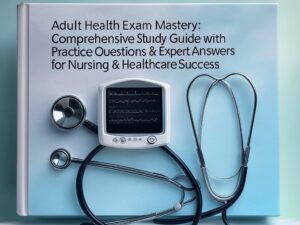


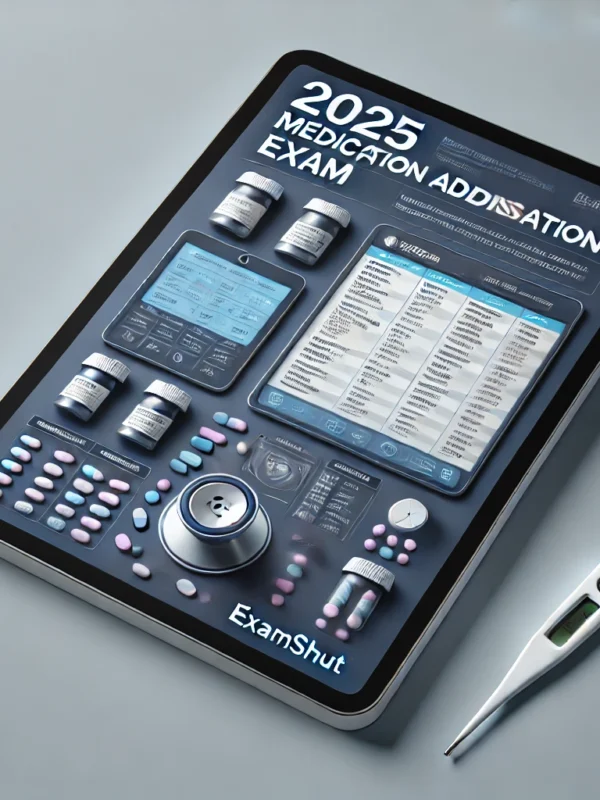
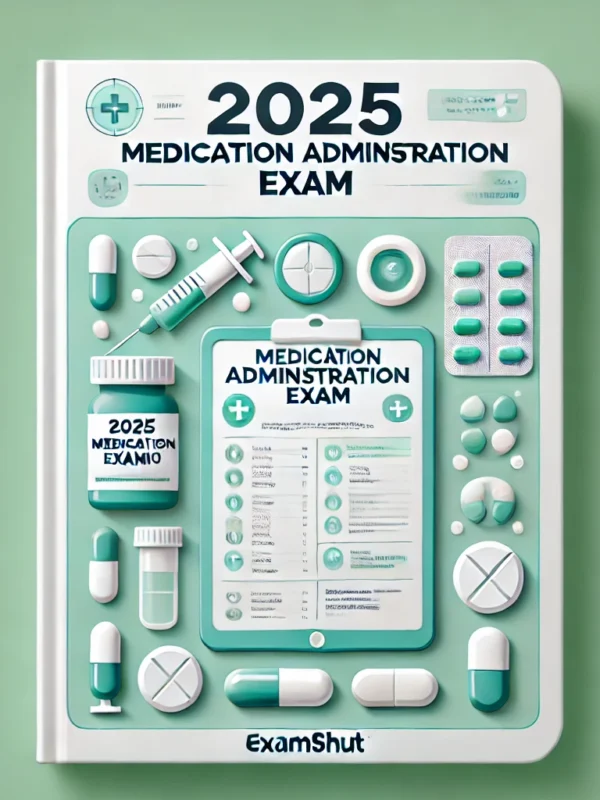
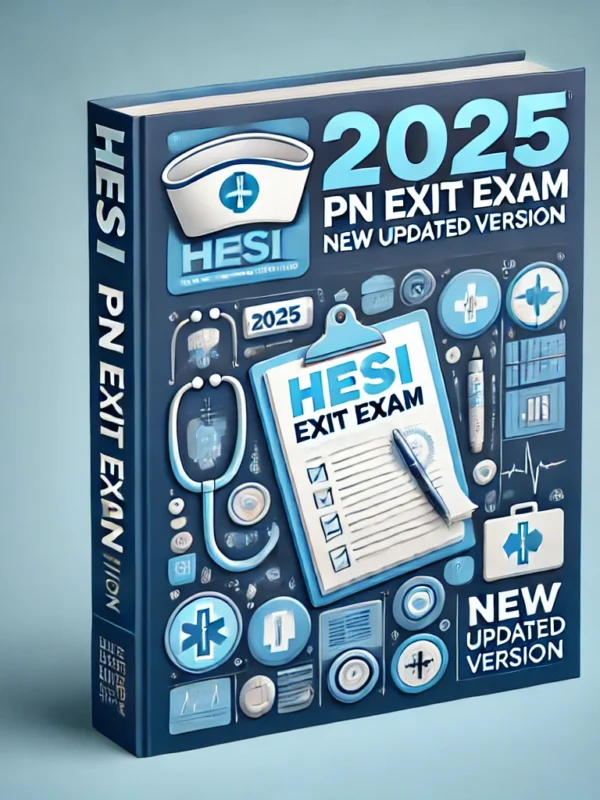



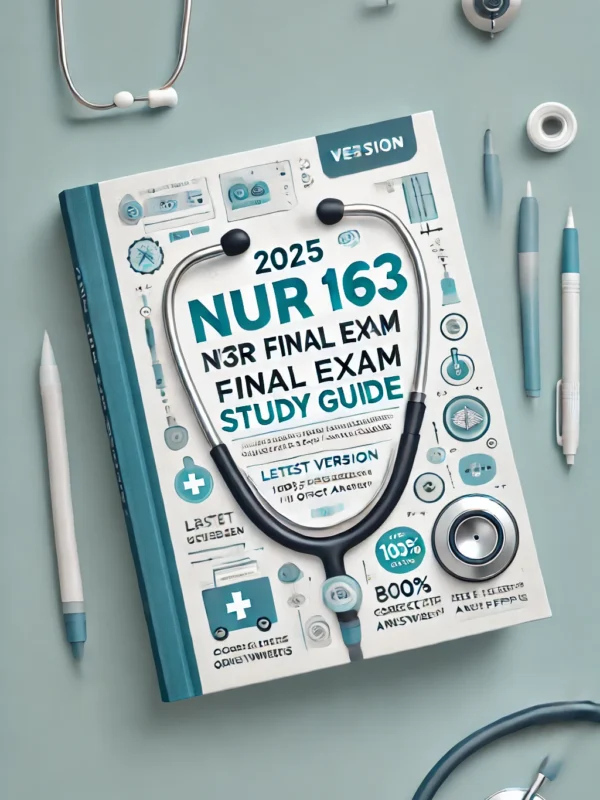
Reviews
There are no reviews yet.